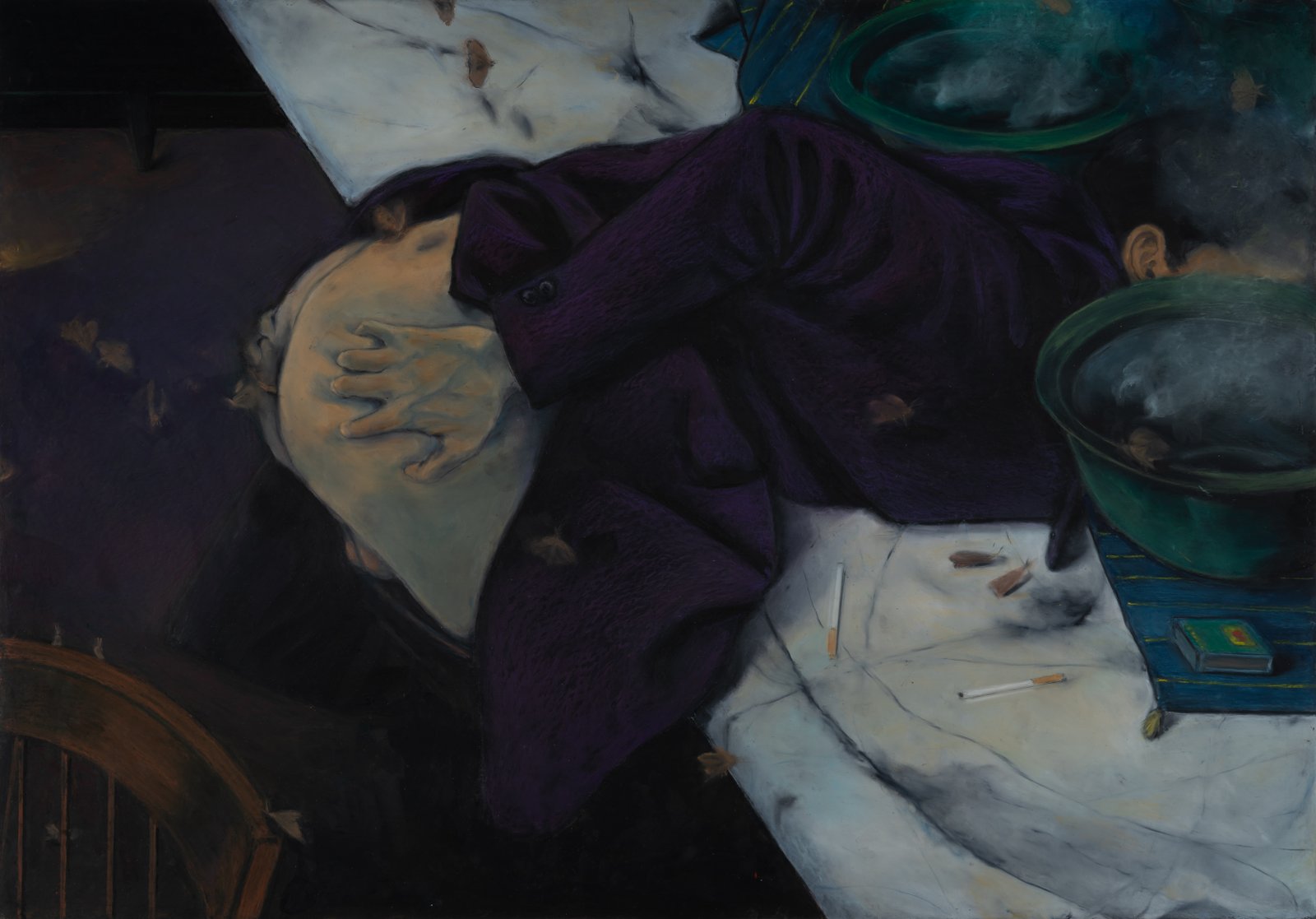Gökhun Baltacı: page after page after page…
Images by Gökhun Baltacı whisper to one another, creating passages from a story, even though the full narrative remains elusive.
Gökhun Baltacı, Gökhun Baltacı, Gökhun Baltacı. When repeated three times with a firm voice, it feels as though a door to a world of secrets might open. This is the world of an artist from Turkey who has mastered the art of oil pastels, using them to reveal the unwritten pages of his inner novel. The first thing that strikes you when encountering an exhibition by Baltacı—a cohesive body of works displayed with intent—is that the images seem to whisper to one another, creating the impression of passages from a story, even though the full narrative remains elusive. The same table appears multiple times, as does the cassette tape resting on it; the garden that serves as the backdrop for one portrait takes center stage in the next work; the characters communicate across rooms, confined within the generally horizontal, and therefore cinematic, frame of the paper they inhabit.

When asked about the reason behind his work, Gökhun Baltacı answered, “A horse runs, a fish swims, and I paint.” Gökhun has been painting since kindergarten, his obsession for art growing ever since. Perhaps it is thanks to a caring teacher who, noticing his extraordinary sense of color, once pulled his mother aside and shared a prophecy: if Gökhun ever expressed a desire to become an artist, she should definitely encourage.
Gökhun Baltacı grew up in Ankara, living in the same house where he was born until last year when he moved to the Cité internationale des arts, Paris. The connection between his paintings and the personality he imbues into objects may stem from this sense of rootedness. The table, the cigarette pack, the comb, the flute, the chestnut, the cocaine strips laid out on a Soutine monograph—these are not mere anecdotes but symbolic presences. Gökhun’s use of color is not descriptive but narrative. In this way, his objects take on a role similar to those in Orhan Pamuk’s Museum of Innocence (here’s the link to our interview with the writer). Meanwhile, the atmosphere of secrecy in his work rather evokes My Name Is Red by the same author.

When I asked Gökhun Baltacı what he paints beyond the individual scenes, his answer was disarming: “They actually depict the daily maneuvers I must undertake to escape the sense of guilt that accompanies my morning awakening.” He refers to the giant from Miyazaki’s Spirited Away: “I see the giant of guilt, and I strive to avoid it.” To do so, he devotes his entire day to his studio. He wakes up, sips his coffee, and works with relentless diligence for eight or nine hours. At a certain point, he sets aside his pastels, washes his hands—frequently used to spread or compress the color—and heads out to meet friends at the same pub. “Only the devil works at night”.

These friends often reappear in his paintings, serving as interpreters of that unspecified narrative. Yet in Gökhun Baltacı’s semantic universe, the most significant presence remains that of Gökhun Baltacı himself. His works are photographic—not because of the extraordinary density of the pictorial material, which would be impossible to achieve with a brush—but for this very reason. Beyond the scene, the subject, or even the framing itself, it is the artist’s intention that takes the center stage. The true focus lies in the enigma posed by each image, with its clues and omissions. The artist leads us by the hand through an uncanny journey, igniting our curiosity, page after page after page…
February 11, 2025
